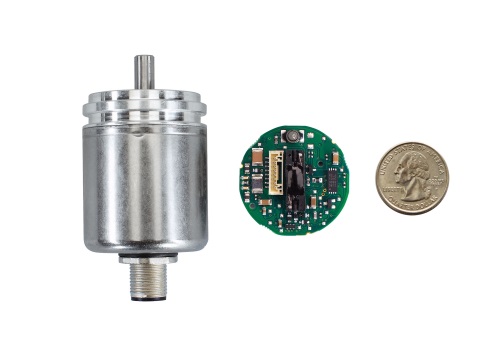Edited by Zak Khan || Embedded microprocessors in encoders offer many advantages. They improve reliability, accuracy and responsiveness. Plus in the case of magnetic encoders, embedded microprocessors can give encoders characteristics associated with optical encoders, but without optical-encoder drawbacks of sensitivity to dust.
Signal processing software running on a microprocessor can make rotation measurements that are accurate and dynamic, but with fewer moving parts than legacy encoder setups. Plus encoder microprocessors allow changes to measurement characteristics via software. That means users can tailor the encoder resolution, zero-point location and direction settings without mechanical adjustments.
Embedded microprocessors make encoders work as diagnostic tools and programming, too. This can reduce the time it takes to get integrated designs to market — plus reduce machine downtime once the design is up and running.
Microprocessors on encoders also enable different approaches to system design and configuration. Rather than wiring everything to one computer, embedded encoder smarts allow system configuration via smartphones or web portals.
Embedded microprocessors can also simplify the controller and drive system. Here, the embedded microprocessor performs various feedback and control operations; this can free up the drive system for other tasks.

Furthermore, as the Internet of Things becomes more of a reality in industrial applications, encoder-embedded microprocessors can provide data to system and operations-level networks. Rather than sending data to only a drive environment, embedded encoder microprocessors can send data to many components in the system and can also be checked by any other component in the system. While this creates quite a large amount of data, the embedded microprocessor allows handling it and interpreting it without burdening the host computer or drive system. This takes the encoder from a single-use component to a part of an integrated system.


Leave a Reply
You must be logged in to post a comment.